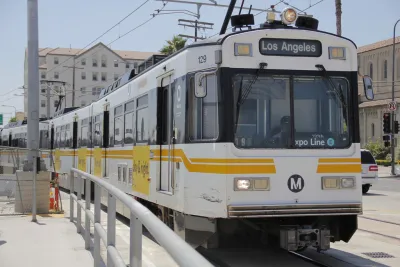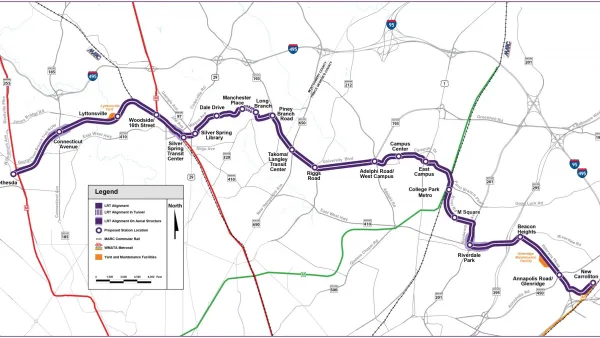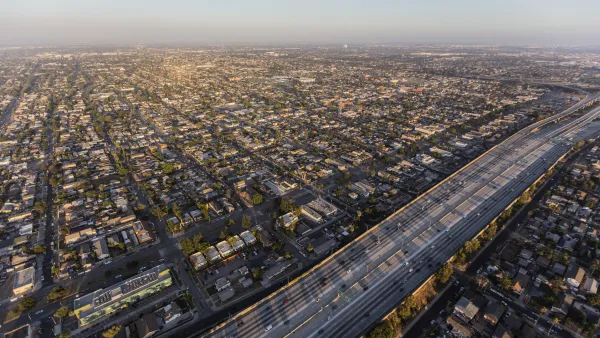As the Los Angeles metro area expands its transit options, transit-oriented development is following suit. In some neighborhoods, lower-income residents are being displaced.

Judging from elections in November and March, L.A. residents seem generally in favor of transit and development. Nate Berg writes about how the city's rail-building spree, while beneficial in many ways, also exacts a social cost.
Pulling from UCLA research, Berg discusses the complexities of displacement, which some development boosters have a tendency to gloss over. "Much of this displacement is happening in neighborhoods surrounding the transit stations in L.A.'s growing public transportation network. Where transit grows, development and displacement seem to follow."
"'I think that we now know there is a dark side of TOD,' says [UCLA planning professor Anastasia] Loukaitou-Sideris. 'That does not mean we should abandon designing TODs, but it definitely means that we really need to safeguard some of these communities.'"
In some places, neighborhoods have effectively organized to limit the scale of development around rail lines, another sensitive point after the city's vitriol-laden fight over the defeated anti-development Measure S.
Berg points to another recent ballot item that may help. "Proposition JJJ, approved by Los Angeles voters in November 2016, requires that new development projects set aside a certain number of affordable housing units and incentivizes the creation of affordable units near transit stations and corridors."
FULL STORY: Neighborhood Watching

National Parks Layoffs Will Cause Communities to Lose Billions
Thousands of essential park workers were laid off this week, just before the busy spring break season.

Retro-silient?: America’s First “Eco-burb,” The Woodlands Turns 50
A master-planned community north of Houston offers lessons on green infrastructure and resilient design, but falls short of its founder’s lofty affordability and walkability goals.

Delivering for America Plan Will Downgrade Mail Service in at Least 49.5 Percent of Zip Codes
Republican and Democrat lawmakers criticize the plan for its disproportionate negative impact on rural communities.

Test News Post 1
This is a summary

Test News Headline 46
Test for the image on the front page.

Balancing Bombs and Butterflies: How the National Guard Protects a Rare Species
The National Guard at Fort Indiantown Gap uses GIS technology and land management strategies to balance military training with conservation efforts, ensuring the survival of the rare eastern regal fritillary butterfly.
Urban Design for Planners 1: Software Tools
This six-course series explores essential urban design concepts using open source software and equips planners with the tools they need to participate fully in the urban design process.
Planning for Universal Design
Learn the tools for implementing Universal Design in planning regulations.
EMC Planning Group, Inc.
Planetizen
Planetizen
Mpact (formerly Rail~Volution)
Great Falls Development Authority, Inc.
HUDs Office of Policy Development and Research
NYU Wagner Graduate School of Public Service





























